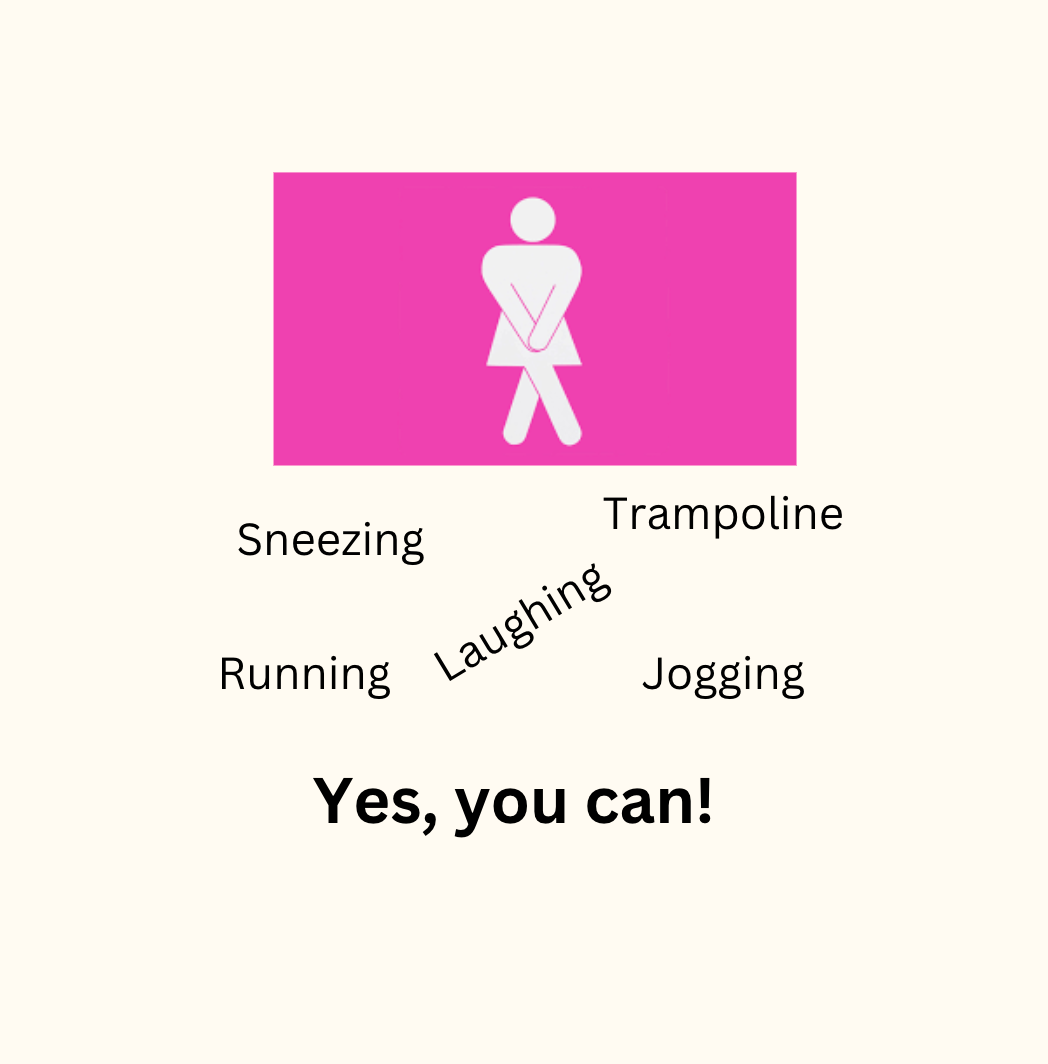
Myth: Urinary incontinence means you have a ‘weak’ pelvic floor.
Share

AbsoNOTley! Urinary incontinence can stem from either an overactive or underactive pelvic floor. I used to humble brag about how ‘tight’ my pelvic floor was. Guess what? “Tight” is not a ‘good thing’. Dudes may think so but as Kate Roddy, Pelvic Floor Expert with Fixt Physio explains, no one comes to her and asks for a tight bicep or a tight shoulder. The key is to have a strong and flexible floor that can contract and relax.
The pelvic floor is a group of muscles that support the pelvic organs, including the bladder. Dysfunction in these muscles can contribute to urinary incontinence among other things. So, let’s understand what’s going on ‘down there’ before we plan for Kegels and other exercises that could make our situation worse.
Overactive Pelvic Floor: An overactive pelvic floor occurs when the muscles are too tight and do not relax appropriately. This can lead to symptoms such as:
- Urinary Urgency: A strong and constant urge to urinate.
- Frequency: Frequent trips to the bathroom, even when the bladder is not full. So annoying!
- Difficulty Initiating Urination: Struggling to start the flow of urine.
- Pain or Discomfort: Pelvic pain or discomfort, especially during intercourse.
Tips for Improving an Overactive Pelvic Floor:
- Pelvic Floor Relaxation Exercises: Practice deep breathing and consciously relax try to relax your pelvic floor muscles. Diaphragmatic breathing can be particularly helpful.
- Stretching Exercises: Incorporate stretching exercises that target the pelvic floor muscles. Yoga and gentle stretches can aid in promoting flexibility.
- Kegel Exercises with Relaxation: While Kegel exercises are often associated with strengthening, it's important to emphasize that doing them with a focus on relaxation is equally crucial for those with an overactive pelvic floor.
- Posture Awareness: Encourage proper posture, as slouching or poor alignment can contribute to pelvic floor dysfunction. Good posture helps the pelvic floor muscles function optimally.
- Hydration and Diet: Staying adequately hydrated is essential for bladder health. Certain foods and drinks, such as caffeine and acidic foods, can irritate the bladder and contribute to overactivity.
- Stress Management: Stress can exacerbate an overactive pelvic floor. Encourage stress-reducing activities such as mindfulness, meditation, or gentle exercises like walking.
The points above are meant to act as a guideline. Before trying anything, I urge you to book an appointment with a pelvic floor physio to determine what the issue is so you can work together to tailor an exercise program specific to your needs.
Food for thought
An expert recently told me that women are worth a lot of money to the feminine hygiene product industry with sales amounting to billions of dollars annually.
Think about that for a minute.
From diapers to pads to tampons to panty liners to diapers again, we are worth a fortune. If we stop peeing our pants, we stop lining their wallets.
Women not understanding their options and thinking incontinence is normal makes a lot more sense now, doesn't it?
Not cool.
